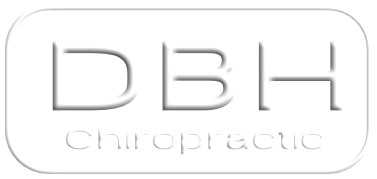Shockwave Treatment In Colorado Springs: Revolutionizing Chronic Pain Treatment
- DBH Chiropractic
- Mar 17, 2024
- 3 min read

For those caught in the relentless grip of chronic pain, every aspect of daily life can become a battleground. From the simplest of physical tasks to the most mundane of movements, the persistent agony paints a bleak, unchanging picture.
When traditional treatment methods seem to offer no respite, it's time to look to the horizon for new, innovative approaches. One such ray of hope comes in the form of an increasingly popular therapy known as shockwave therapy.
Chronic pain can stem from a myriad of underlying conditions, including plantar fasciitis, tendinitis, and calcific tendinopathy, to name just a few. Shockwave therapy presents a non-invasive treatment option for those who have struggled with chronic pain unresponsive to conventional medical interventions. In this in-depth exploration, we will shed light on the marvel of shockwave therapy, uncovering how it's rewriting the playbook on pain management for countless individuals.
Understanding Shockwave Treatment
Shockwave therapy also known as ESWT is a cutting-edge treatment that employs acoustic waves to stimulate the healing of tissues. Unlike traditional treatments, which may focus on symptom management, this therapy aims to address the root cause of the pain, promoting regeneration and recovery. The waves used in the therapy are high-energy and can be applied to specific areas of the body, initiating a biological response that accelerates the natural healing process.
This therapy is administered by trained professionals who use specialized devices to deliver shockwaves to targeted areas. Patients typically find the experience painless or minimally uncomfortable, making it a preferred option for those looking to avoid more invasive procedures.
Conditions Treated with Shockwave Therapy
Shockwave therapy has garnered an outstanding reputation for its effectiveness in treating a broad range of chronic conditions. Some of the most common ailments that see tremendous improvement with shockwave therapy include:
Plantar fasciitis
Achilles tendinitis
Shoulder tendinopathies
Hip and knee tendinopathies
Chronic muscular pain and myofascial trigger points in neck and back
Chronic Sciatica
& More
Each of these conditions can severely impact a person's quality of life, resulting in restricted movement, reduced mobility, and persistent discomfort. Shockwave therapy can be the key to unlocking a future free of these limitations.
Benefits of Shockwave Therapy
The benefits of shockwave therapy extend beyond merely managing the symptoms of chronic pain. When integrated into a patient's care plan, it can:
Provide Prolonged Pain Relief
Many patients report a significant reduction in pain levels after undergoing a series of shockwave sessions. This relief is often sustained over an extended period, offering a welcome reprieve from the relentless nature of chronic pain.
Improve Functionality and Mobility
By promoting the healing of damaged tissues, shockwave therapy can restore functionality to affected areas. Patients often experience a significant improvement in mobility, which can have a profound impact on their daily activities and overall well-being.
Reduce Dependency on Medication and Surgery
For those who have relied on medications or faced the daunting prospect of surgery, shockwave therapy offers a welcome alternative. By addressing the underlying pathology, it reduces the need for ongoing medication and can, in some cases, eliminate the need for surgical intervention altogether.
How Shockwave Therapy Works
A typical shockwave therapy session can last anywhere from 15 to 30 minutes, and the number of required sessions can vary depending on the condition being treated. In most cases, a healthcare professional will utilize an ultrasound device to identify the precise location for treatment. Once the area is marked, the shockwave applicator is pressed against the skin, and the waves are delivered.
Treatment Process and Frequency
The therapy typically involves several sessions spread out over a few weeks, with initial treatments occurring on a weekly basis. The exact number of sessions needed will be determined by the healthcare provider based on the patient's response to treatment.
Potential Side Effects and Contraindications
While shockwave therapy is considered safe and non-invasive, some patients may experience minor side effects such as soreness or slight bruising at the treatment site. It's essential for individuals to discuss their full medical history and any existing conditions with their provider to ensure that shockwave therapy is a suitable option.
Conclusion
Chronic pain can feel unbeatable, but shockwave therapy offers hope as a non-invasive treatment. It provides relief from persistent pain, showcasing medical innovation. By learning about this approach and talking to healthcare providers, patients can move towards a pain-free future.
If conventional treatments haven't worked, consider shockwave therapy for a new path to well-being. This treatment revolutionizes chronic pain management, offering hope and empowerment to patients. Discover a more comfortable life with this innovative therapy that promises a brighter future.



